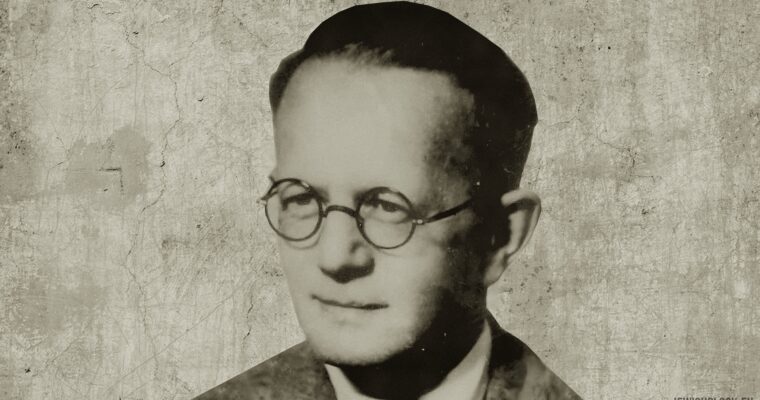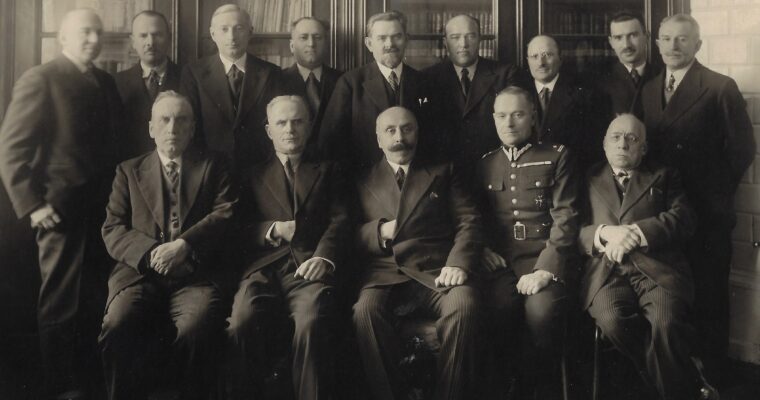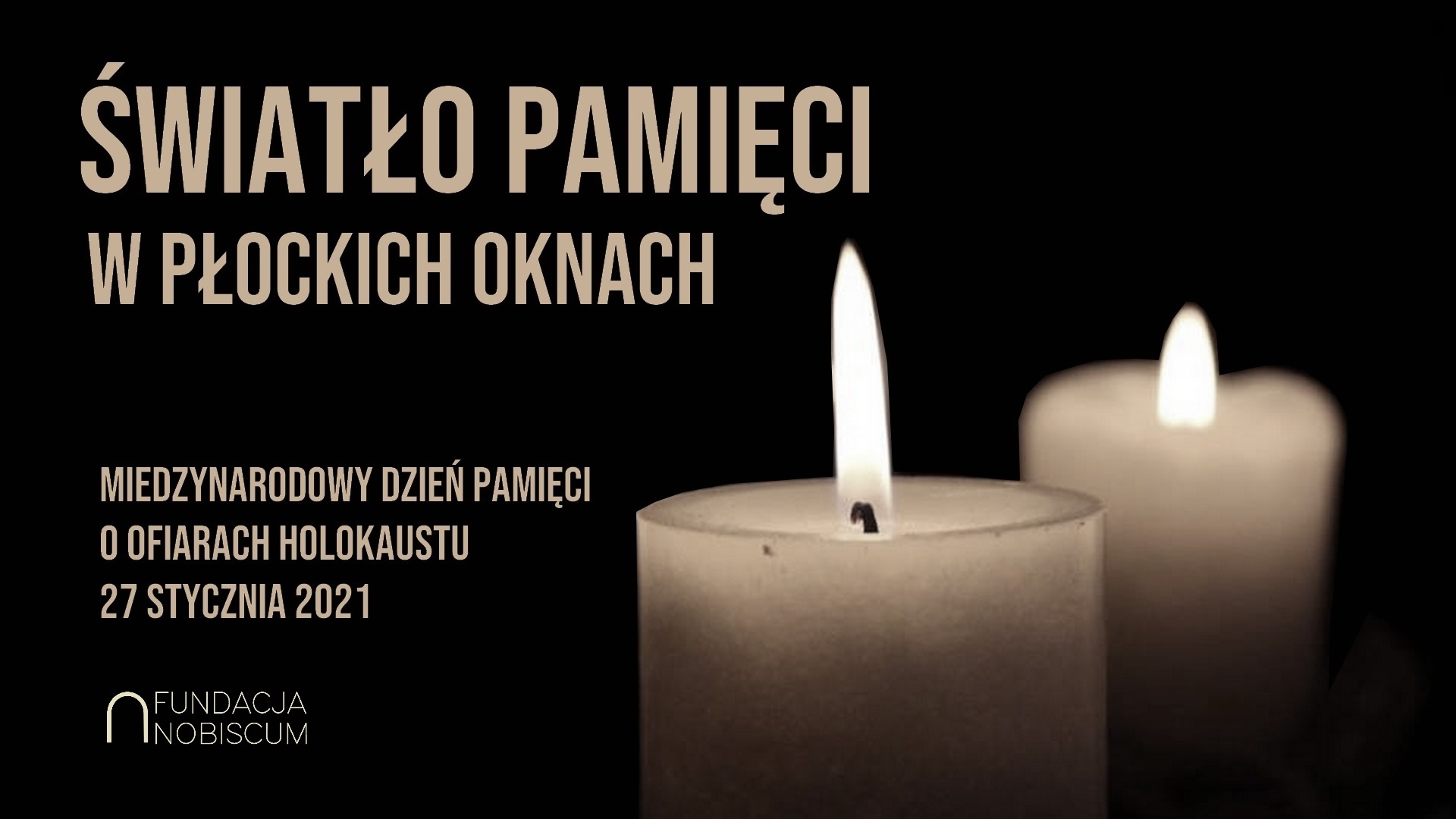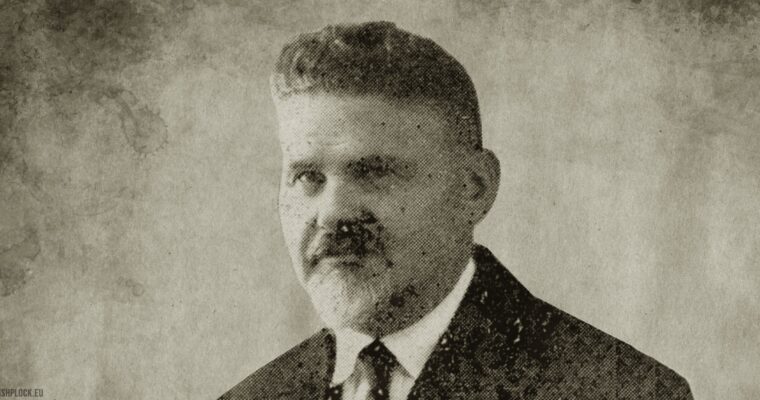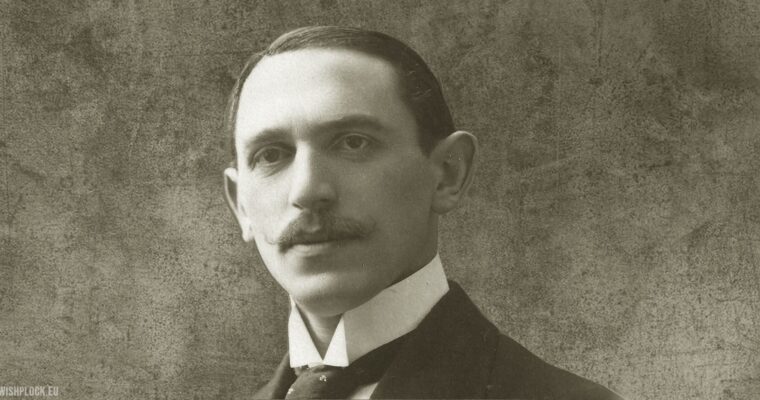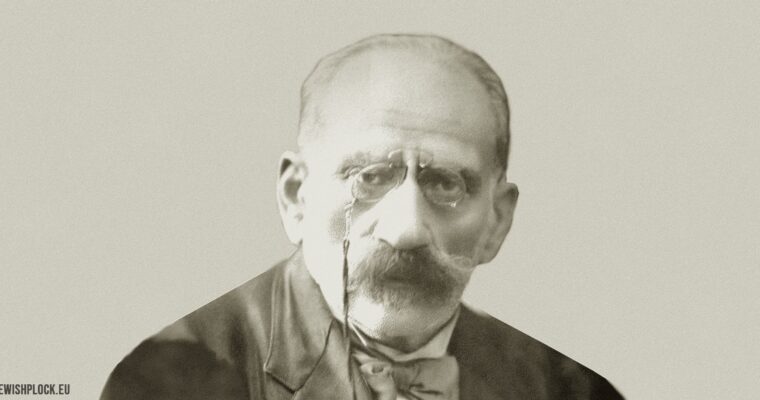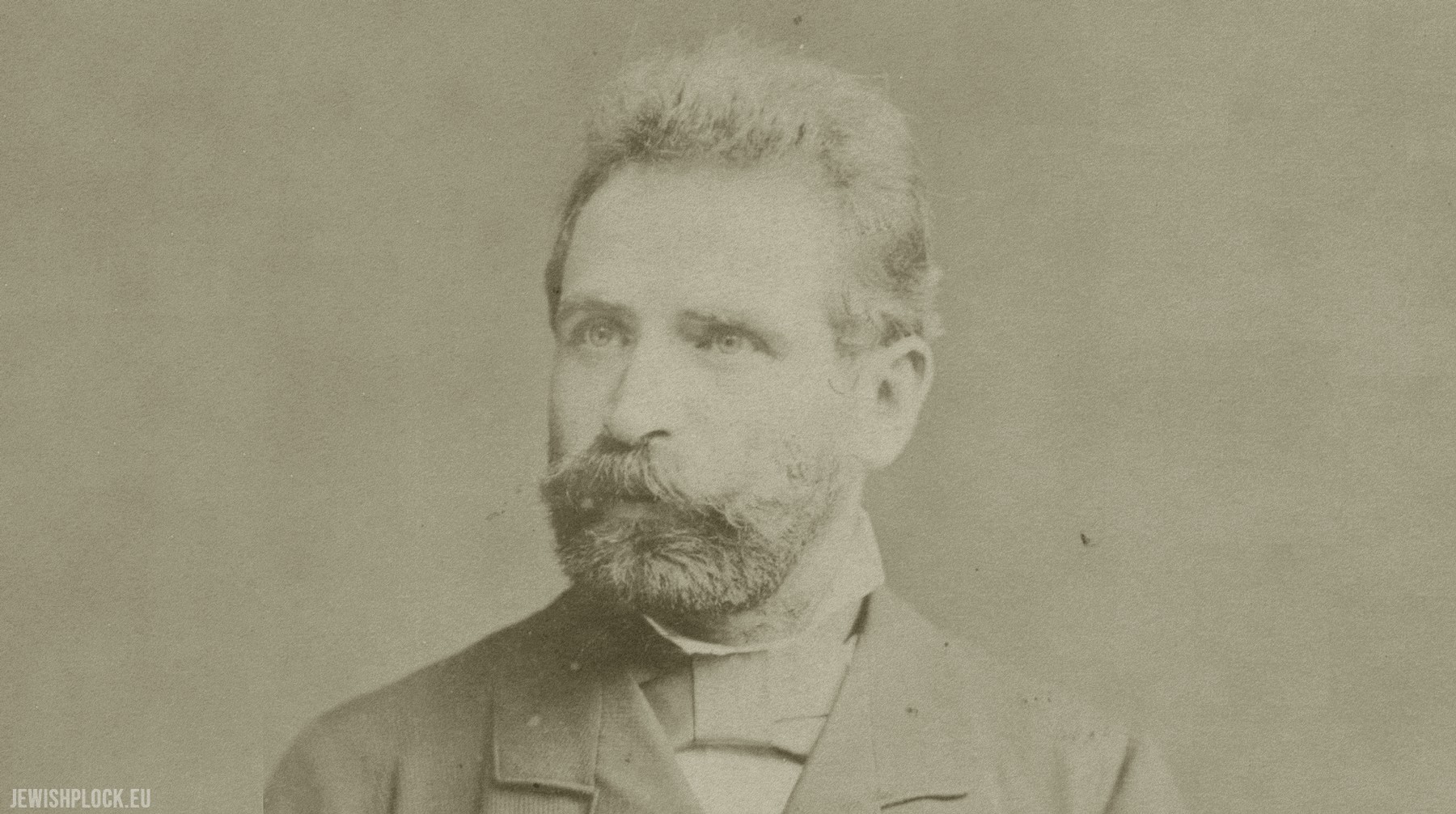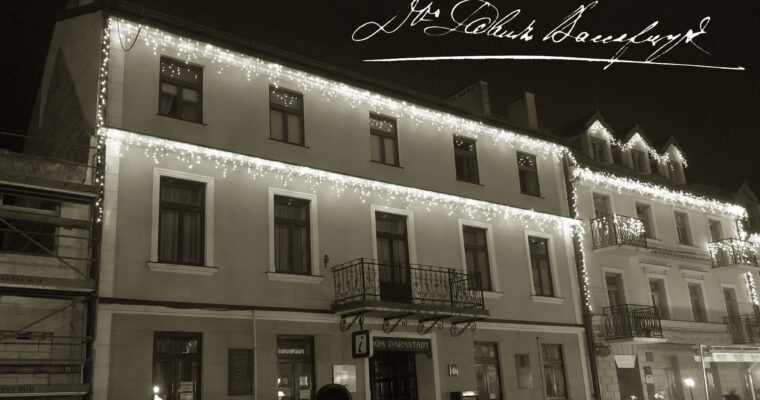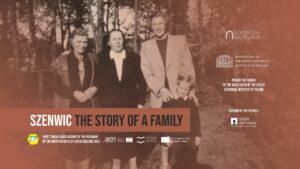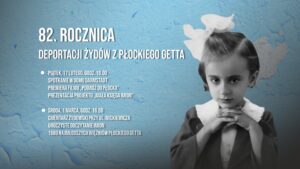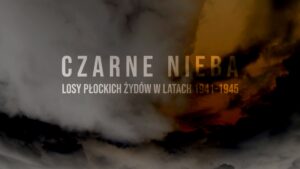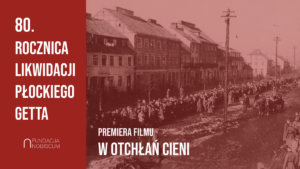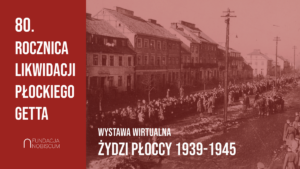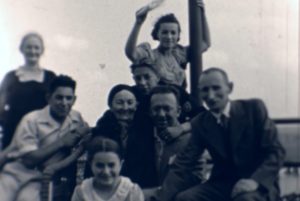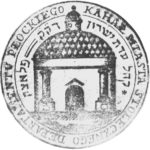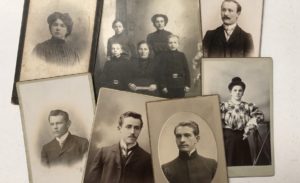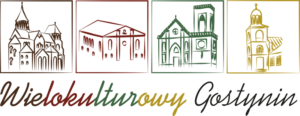Year 2021 marks the 80th anniversary of the liquidation of the Płock ghetto. The first deportation of Jews from Płock took place on February 21, 1941, the last – on March 1 of this year. In order to commemorate the days when about 10,000 Jews were deported by the Germans to labor and extermination camps, the Nobiscum Foundation prepared three events.
Premiere of the film Into the abyss of shadows
21 February 2021, 6 p.m. CET
Where: jewishplock.eu, fundacjanobiscum.eu websites together with the foundation’s Facebook channels
On February 21, 1941, in the early morning, the Jewish district was surrounded and the SS members began to drive Jews out of their homes by beating them. I watched the first deportation phase from the window of our apartment. Jews expelled from their homes were beaten terribly and taken to trucks. Many people with no signs of life lay in the streets. The truck hatches were not lowered, and SS men with truncheons were standing on both sides, hitting those getting on, so that a gate made of human bodies was created in front of the truck. All our luggage was taken from us before. I remember that it was freezing cold on the day of my deportation and many people on the trucks were wearing only their underwear. There were about 35-40 people on each truck, crammed like sardines. [Izaak Zemelman]
The authors of the film are Gabriela Nowak-Dąbrowska and Piotr Dąbrowski of the Nobiscum Foundation. The production consists of fragments of memoirs of Płock Jews who survived the deportation from the Płock ghetto, including Symcha Guterman, Adam Neuman-Nowicki, Izaak Zemelman, Tema Lichtensztajn, as well as archival materials and specially animated for the film drawings by Yaakov Guterman, a resident of Płock, a talented artist and the good spirit of Płock known to many in our city.
The title of the film refers to Symcha Guterman’s poem “My Faith”.
The film will be available in Polish, with Polish and English subtitles.
Virtual exhibition The Jews of Płock 1939-1945
Premiere of the exhibition: 21 February 2021, 6 p.m. CET
Where: jewishplock.eu, fundacjanobiscum.eu websites together with the Facebook channels of the foundation and the Art Gallery of Płock
Before World War II, nearly 10,000 Jews lived in Płock. They played an important role in the city’s social, cultural and economic life. They co-created the history of Płock for over 700 years. The outbreak of World War II meant that their world ceased to exist. The virtual exhibition entitled “The Jews of Płock 1939-1945”, prepared by the Nobiscum Foundation in cooperation with the Art Gallery of Płock, will recall the most important information about the fate of Płock Jews during World War II. Materials presented at the exhibition from, among others, from the collections of the Płock Scientific Society, Ghetto Fighters House, the State Archives in Płock, the National Library, the National Digital Archives and private collections.
Author: Gabriela Nowak-Dąbrowska
Graphic concept and website design: Piotr Dąbrowski
Project partner: Art Gallery of Płock
The exhibition will be available in Polish and English.
Educational project It happened right here, where you are standing now
21 February – 1 March 2021
Where: outdoor space of Kwiatka Street in Płock
How often, while living, dealing with everyday matters or waiting for a bus to arrive, do we wonder about the fate of nearly 10,000 people who were brutally deported from the Płock ghetto at the turn of February and March 1941, directly from Kwiatka Street, former Szeroka Street? On the 80th anniversary of the deportation of Płock Jews, the Nobiscum Foundation wishes to recall this event by implementing an educational project in the space of the street. The information boards will include photos and information, as well as QR codes enabling you to directly visit the websites with the virtual exhibition “Płock Jews 1939-1945” and the film “Into the abyss of shadows”.
More information on our events coming soon!
